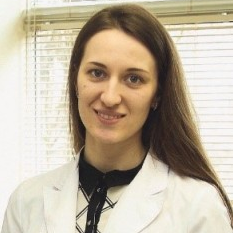Nanostructured Platinum-Containing Electrocatalysts for Hydrogen Energy
A special issue of Inorganics (ISSN 2304-6740). This special issue belongs to the section "Inorganic Solid-State Chemistry".
Deadline for manuscript submissions: closed (20 March 2024) | Viewed by 2854
Special Issue Editors
Interests: synthesis, structure, and properties of nanostructured electrocatalysts for low-temperature fuel cells and electrolyzers
Special Issues, Collections and Topics in MDPI journals
Interests: synthesis, structure, and properties of nanostructured electrocatalysts for low-temperature fuel cells and electrolyzers
Special Issues, Collections and Topics in MDPI journals
Special Issue Information
Dear Colleagues,
Low-temperature fuel cells with a proton-exchange membrane are an important part of the rapidly developing field of hydrogen energy. Electrocatalysts are key components of such electrochemical devices. The best catalysts for polymer membrane fuel cells are platinum and its alloys when used on an electron-conducting carbon support. The use of alloying components of various natures, in combination with the formation of a wide range of complex structural types of Pt–M nanoparticles (solid solutions, intermetallic compounds, core–shell, gradient NPs, nano-frames, etc.), make it possible to significantly increase the activity, selectivity, and stability of catalysts in electrochemical reactions and ). In recent years, studies devoted to the creation of PMG-free catalysts with a proton-exchange membrane for use in the cathode and anode of fuel cells have become increasingly important. This Special Issue, “Nanostructured Platinum-Containing Electrocatalysts for Hydrogen Energy”, will provide information on new advanced Pt–M and PMG-free catalysts that are promising for use in PEMFC. We welcome papers devoted to the development of new methods of synthesis and the search for new architectural types of nanoparticles with high catalytic activity, the study of the mechanism of reactions occurring on such catalysts, the analysis of the mechanisms of catalyst degradation, and the search for ways to increase their durability. We encourage the submission of theoretical and experimental papers, as well as reviews covering all topics related to Pt–M catalysts and their applications in a variety of processes and devices.
Dr. Anastasia Alekseenko
Dr. Sergey Belenov
Guest Editors
Manuscript Submission Information
Manuscripts should be submitted online at www.mdpi.com by registering and logging in to this website. Once you are registered, click here to go to the submission form. Manuscripts can be submitted until the deadline. All submissions that pass pre-check are peer-reviewed. Accepted papers will be published continuously in the journal (as soon as accepted) and will be listed together on the special issue website. Research articles, review articles as well as short communications are invited. For planned papers, a title and short abstract (about 100 words) can be sent to the Editorial Office for announcement on this website.
Submitted manuscripts should not have been published previously, nor be under consideration for publication elsewhere (except conference proceedings papers). All manuscripts are thoroughly refereed through a single-blind peer-review process. A guide for authors and other relevant information for submission of manuscripts is available on the Instructions for Authors page. Inorganics is an international peer-reviewed open access monthly journal published by MDPI.
Please visit the Instructions for Authors page before submitting a manuscript. The Article Processing Charge (APC) for publication in this open access journal is 2700 CHF (Swiss Francs). Submitted papers should be well formatted and use good English. Authors may use MDPI's English editing service prior to publication or during author revisions.
Keywords
- platinum catalysts
- platinum electrocatalysts
- bimetallic catalysts
- platinum alloys
- carbon dioxide conversion
- fuel cells
- hydrogen production
- Pt-M nanoparticles
- PMG-free electrocatalysts






